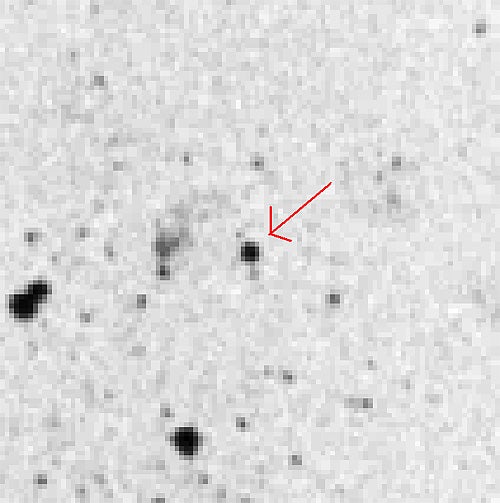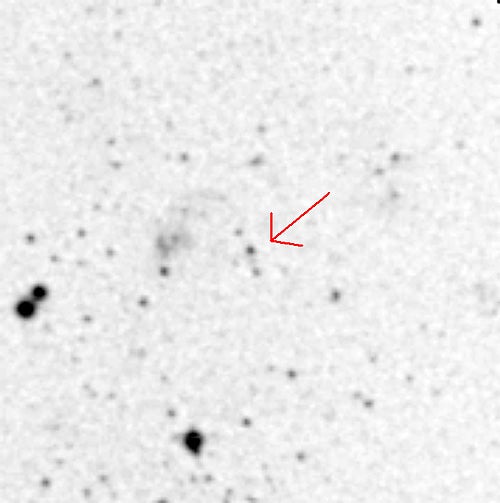Three million light-years away in the Pinwheel Galaxy (M33), a star is erupting. Normally, this would not be news. But until recently, this star — dubbed Variable A — was in an eruptive state for at least 45 years. And the rest of the story is even stranger: While it’s been erupting, Variable A has become fainter and cooler.
In 1950, Variable A was one of the brightest stars visible in the Pinwheel Galaxy. A spectrum taken at the time classified Variable A as an F-type supergiant. This means its surface temperature was slightly hotter than the Sun’s. (The Sun’s spectral class is G.)
Since then, Variable A rapidly decreased by 3 magnitudes — a brightness factor of 16 — and became red. A spectrum taken in 1985 classified the star as an M-type supergiant. Such a star has a surface temperature several thousand degrees less than the Sun.
Variable A had shed a great deal of mass, creating a thick, dark, dusty envelope around the star. It became optically fainter, but the formation of dust shifted its energy distribution to the infrared. “Var A’s total luminosity did not decrease when it was in its ‘eruption,'” says Humphreys. “We knew it had shed a lot of mass because … it is bright at 10 microns.”
Other stars have demonstrated similar behavior, but not for as long a time. Rho (ρ) Cassiopeiae, for example, has had several events during which its envelope temporarily became dense and cool. In Rho Cas’ case, however, the episodes lasted only 1 to 2 years. Rho Cas also has not formed significant circumstellar dust.
Another star, NML Cygni, is similar to Variable A. In NML Cygni’s case, its circumstellar ejecta have been altered into a small, bean-shape nebula by the ultraviolet radiation from a nearby cluster of hot, luminous stars.












